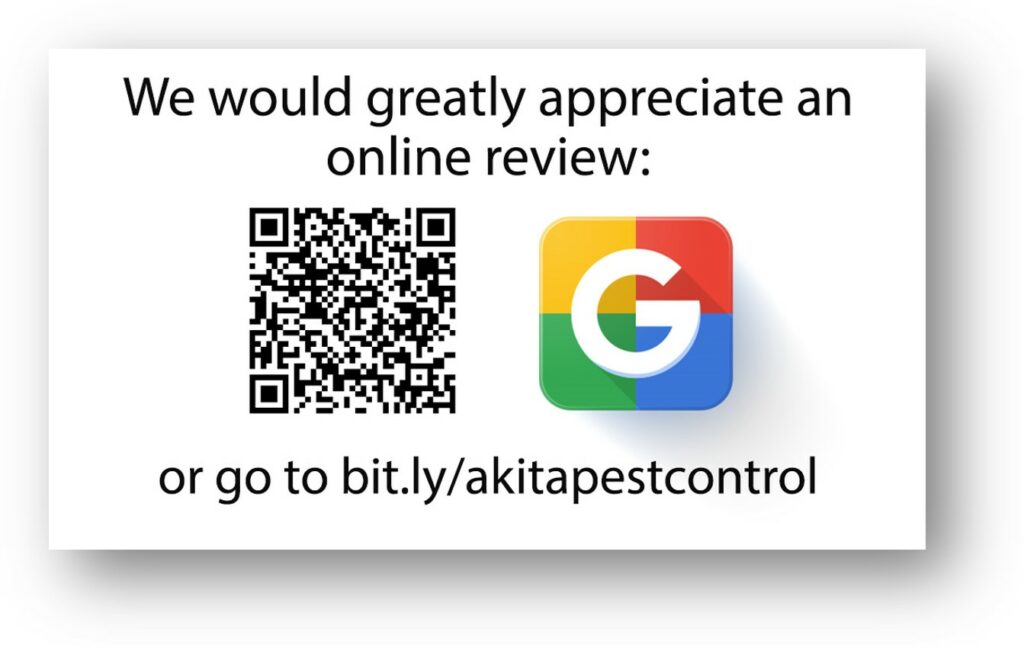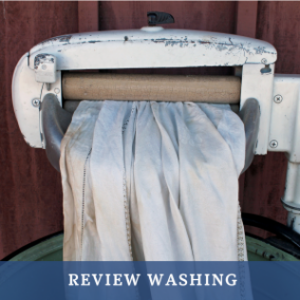
It’s no secret that online reviews are important to businesses of all kinds and sizes, including home builders. A whopping 90% of consumers read online reviews before visiting a business, and those reviews they read impact 67.7% of their purchasing decisions. And even more importantly, 84% of people trust online reviews as much as personal recommendations.
But despite these overwhelming statistics about the importance of reviews, many businesses don’t put enough emphasis on their online reputation. After more than 24 years of helping home builders, contractors and other businesses manage their online reviews, these are the five most common mistakes we see companies make:
Mistake #1: Not Monitoring Your Online Reputation
Have you ever Googled your company’s name? If you haven’t done it recently – or at all –do it now to see what you find. Pay attention to how many results listed are company assets or are specifically about your company – such as the website or social media sites. Also make a note of any sites that include reviews. Do you like what you see, or is there room for improvement?

When Googling your business, the first thing you should see is the Google Business Profile listing that includes contact information, reviews, photos, a map to the business, and more. Then in the actual list of results, you should hopefully see:
- The website – maybe even multiple pages of the site.
- The social media sites.
- Any public directories the business is listed in, like the BBB, Chamber, HBA, etc.
- News that the company has been mentioned in.
- Job openings posted on job boards.
- Ads from competitors.
- Listing sites your for-sale homes are on.
 These are all good results, but there may be a few negative items mixed in, such as bad reviews or negative news stories. You can also Google your company’s name plus the word ‘reviews’ or ‘sucks’ at the end for an even deeper dive into potentially negative results. While we hope there is nothing there, it’s good to confirm that there’s no one out there talking bad about your business!
These are all good results, but there may be a few negative items mixed in, such as bad reviews or negative news stories. You can also Google your company’s name plus the word ‘reviews’ or ‘sucks’ at the end for an even deeper dive into potentially negative results. While we hope there is nothing there, it’s good to confirm that there’s no one out there talking bad about your business!
In addition to Googling your business, there are a few other ways to monitor your company’s online reputation:
- Use the listening function built into your social media scheduling platform, such as Sprout Social or Hootsuite.
- Set up Google Alerts for the company name and company principals.
- Monitor mentions of your business on native social media sites by following hashtags or searching your name to see what content pops up.
Mistake #2: Not Responding to Online Reviews
One of the most common questions we receive regarding online reviews is when and how to respond to them. The answer isn’t always cut and dry, but these are the primary things we look for when deciding how to handle online reviews:
- If there were any negative results on the first few pages of results when you Googled your business name, it’s time to put a reputation management plan in place to get them off pages 1 and 2 at minimum. This goes hand-in-hand with search engine optimization and is why it’s so important to have a robust SEO system in place.
- If there are any bad reviews online, no matter where they are, find out if you can respond as your business to address the review.
- If you have no online reviews, that’s also a problem! Potential customers are searching for your business and looking for third-party recommendations – aka reviews – of your business, so they need to be there!
How to Respond to Negative Reviews
First, ask yourself if the review highlights a real problem that needs to be addressed. If it is, it likely means someone has an issue with your product or service and they’ve vocalized that something went wrong. This type of feedback is negative in the sense that it paints a business in a poor light, but it can be helpful in exposing real problems that need to be dealt with. If the review is not legitimate or is a mean-spirited attack, there are ways to address it as well.
No matter which type of review it is, don’t panic or respond in the heat of the moment. Take a breath – or a few hours if needed – and think through the best way to address the review. When responding, the goal is to be transparent, positive and sincere – you want everyone to see you are willing to at least acknowledge the issue, and hopefully also look for a mutual resolution.
In the response, work to move the conversation offline. You may not ever be able to repair this customer’s relationship with the business or fix the situation, but your response shows a willingness to discuss and handle things in an appropriate manner. The effort shown is for the next 100 customers, not always the current one.
Learn more about responding to negative reviews on social media and Google here.
Mistake #3: Not Asking for Reviews
Asking for reviews is the best way to get reviews, especially the positive ones! The best antidote to a bad review is plenty of reviews from the rest of your customer base. No company or employee is perfect all the time, so bad reviews will happen. But it’s important to have plenty of positive reviews to illustrate that the one bad review is not the norm for your company.
When asking customers or associates for reviews, it’s important to remember that there are things you cannot do. For example, a business cannot pay for reviews or incentivize customers for leaving a positive review, even if it’s just the promise of a discount or entry into a contest as a reward. Doing so is a violation of both Google’s Terms of Service and against the FTC’s guidelines and can result in removal of reviews, removal of your Google Business Profile and even lawsuits.
One thing you can do is incentivize your employees to ask for reviews by hosting an internal contest or ensuring bragging rights to whichever employee receives the most positive feedback. It’s a great way to ensure your team members bring their A game during every interaction, and it also helps them remember to ask for a review while they’re interacting with a customer.
It is also totally ok to create systems to ask for reviews to ensure you’re intentional and consistent about it. Create a follow-up email that goes out to customers at a certain point in a project, make it habit to do an in-person ask before finishing a project, or include a flyer in paperwork that you hand out at closing. You can even automate your request for a review with companies like Avid Ratings, Checkkit or GuildQuality.

How Many Reviews Do I Need?
Google uses a formula used to determine what companies show up in searches, and part the formula is based on how many reviews a business has. The three things that Google uses to determine what businesses show up in a search include:
- Your proximity to the searcher or to the location they’re searching about.
- The relevance your business has to the search.
- The company’s prominence, which is based on how many reviews it has and what the overall ranking is.
A business must have a minimum of three reviews to get a star rating to show up on Google. But at 10 reviews, you’ll see a noticeable boost in how frequently the business shows up in searches. When surveying homebuilding industry members in January 2023, YDOP found that the industry standard for home builders was an average of 32 Google reviews with an average rating of 4.4.
When looking locally, the map pack, or set of three Google Maps-based results that show up first, is what matters the most. Google automatically shows the top three local businesses for a search term in the map pack. Search your business and its location and see what shows up – you should aim to have more reviews than at least one of the businesses that shows up there to ensure you’re on the map pack.

Mistake #4: Not Learning from Reviews
We mentioned that your company may get feedback from customers leaving negative reviews when discussing Mistake #2. When this happens, it’s crucial that you honestly evaluate the feedback and learn from it. These reviews will often highlight pain points for customers, from employee issues to process or product problems. Do you notice a pattern of frustrations mentioned in the reviews? Are there similarities in the complaints? Then your customers likely have a valid point that should be addressed.
You can learn from your competitors’ reviews, too. Evaluate what customers are saying about their business – good or bad – and use it to guide your own practice. Do customers appreciate a specific service or touch they offer? Then consider ways you can provide a similar experience. Do customers get frustrated with a certain area of their process or product? Then ensure your customers never have a reason to complain about that same issue.
Mistake #5: Not Following the Rules for Reviews
There will be times when you get reviews that aren’t legitimate or aren’t allowed. In fact, there are six types of reviews that you can flag for removal on Google:
- Reviews from employees (past or present)
- Reviews from competitors
- Mistaken identity reviews
- Abusive or hateful reviews
- Political-based reviews
- Off-topic reviews
Businesses must follow the rules for reviews, too. As we mentioned in Mistake #3, not doing so can result in your business listing being removed from Google or even the potential for lawsuits from the government. Here’s what you need to know:
 The Federal Trade Commission got heavily involved in monitoring reviews in the late 2010s. A set of Endorsement Guidelines were created to protect the consumer, while the Consumer Review Fairness Act protected people’s ability to share their honest opinions about a business. This act made review washing, or the practice of gathering reviews and removing specific ones, illegal.
The Federal Trade Commission got heavily involved in monitoring reviews in the late 2010s. A set of Endorsement Guidelines were created to protect the consumer, while the Consumer Review Fairness Act protected people’s ability to share their honest opinions about a business. This act made review washing, or the practice of gathering reviews and removing specific ones, illegal.
If you share reviews in any way, all reviews must be made public. Sites like Facebook, Google, Yelp and TripAdvisor must abide by the all-or-nothing policy. Your business also has to if it pulls reviews from a third-party site through to your website, social sites or anywhere else.
Testimonials vs. Reviews
There is an explicit difference between reviews and testimonials, and understanding it is key to not breaking the rules of reviews.
Reviews are customer opinions that are received through third-party sites without your direct control, and they usually have a star rating attached. Testimonials are comments that you solicit directly from your best and most appreciative customers, and they usually come to you or other members of your business directly.
One of the biggest benefits of gathering testimonials is that they can be used in your advertising, while reviews cannot (unless you are sure to use them all). Just remember, you must get the customers’ permission to use the testimonial in writing! Here are a few of our favorite ways to share testimonials:
- Have a testimonial page on your website with all of them listed.
- Share them on social media using #TestimonialTuesday and a cute graphic.
- Have customers share their testimonial as a video.
- Get images of your customers in or in front of their new home to go with their testimonial.
- Share testimonials on specific flyers or collateral where it makes sense.
Do you need help managing your online reputation? Let the Denim Marketing team help! Contact us at 770-383-3360 or online here.
Leave a Reply